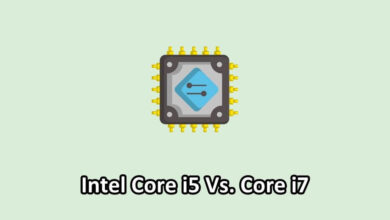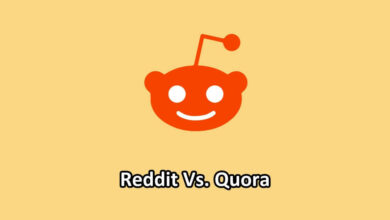IoT vs Cloud Computing Showdown: Decoding the Duel [2024]
In today’s interconnected digital landscape, the Internet of Things (IoT) and Cloud Computing stand as pivotal technological advancements.
The term IoT refers to the dynamic network of interlinked devices, enabling seamless communication and data sharing among them. In contrast, Cloud Computing encompasses the provision of computing services, including storage, processing, and applications, over the internet.
Understanding the difference between IoT and Cloud Computing is important for adeptly navigating the landscape of technology. Recognizing these distinctions is vital for leveraging the full potential of both technologies in tandem.
IoT vs. Cloud Computing (A Comparison)
| Internet of Things (IoT) | Cloud Computing |
|---|---|
| The Internet of Things(IoT)refers to a network of tangible devices equipped with sensors, software, and connectivity features. | Cloud Computing is a paradigm for delivering computing services over the internet. |
| It is a network of physical devices with sensors, software, and connectivity capabilities. | Cloud Computing is a paradigm that provides computing services (storage, processing power, applications) over the internet. |
| IoT's primary function is to enable devices to gather and share data, fostering a seamless integration between the physical and digital environments. | Cloud Computing's main role is to offer scalable and flexible computing resources, allowing users to store, process, and access data and applications without the need for on-premises hardware. |
| IoT often processes data at or near the source (edge computing) to enhance real-time decision-making and reduce the latency associated with transmitting data to centralized servers. | Cloud Computing typically follows a centralized approach to data processing, where data is stored and processed in large data centers. |
| IoT encompasses a vast network of devices, ranging from everyday objects to industrial machinery. | Cloud Computing operates at a broader scale, providing computing resources and services to users and businesses across different industries. |
| IoT devices often operate with a degree of autonomy, interacting with each other in a peer-to-peer fashion. | Cloud Computing services are centrally managed, and users depend on cloud providers for resources. |
What is IoT?
At its core, IoT is a vast network of physical devices embedded with sensors, software, and connectivity capabilities. These devices, ranging from everyday objects to industrial machinery, collect and exchange data, fostering a seamless integration of the digital and physical realms.
Key Characteristics of IoT:
- Connectivity: IoT devices are equipped with connectivity features, allowing them to communicate with other devices or central systems.
- Real-Time Data Collection: IoT devices continuously collect and transmit data in real-time.
- Autonomous Operation: Many IoT devices operate autonomously, performing tasks without constant human intervention.
- Diverse Applications: IoT spans a wide range of applications, from consumer electronics to industrial processes and healthcare.
- Data Variety and Complexity: IoT generates diverse and often complex data, including sensor readings, images, and multimedia.
Functions of IoT
- Enables seamless data exchange between devices, forming a network that facilitates real-time communication and collaboration.
- Provides up-to-the-minute information, enabling quick decision-making and responsiveness in applications ranging from smart homes to industrial automation.
- Enhances efficiency by automating processes and reducing the need for manual control, especially in applications like smart appliances and wearable devices.
- Addresses various needs and industries, contributing to the creation of smart cities, efficient supply chains, and improved healthcare systems.
What is Cloud Computing?
Cloud Computing entails the delivery of computing services, such as storage, processing power, and applications, over the Internet. Users can access and utilize these services on-demand, without the need for physical infrastructure or direct management.
Key Characteristics of Cloud Computing
- On-Demand Self-Service: Cloud Computing allows users to provision and manage computing resources as needed, without requiring human intervention from service providers.
- Broad Network Access: Cloud services are accessible over the network through standard mechanisms, promoting ubiquitous access from various devices and locations.
- Resource Pooling: Cloud providers pool computing resources to serve multiple customers, dynamically assigning and reassigning resources as needed.
- Rapid Elasticity: Cloud resources can be rapidly and elastically provisioned or released to quickly scale up or down based on demand.
- Measured Service: Cloud systems automatically control and optimize resource use, providing transparency for both the provider and the consumer.
Functions of Cloud Computing
- Users can scale resources up or down based on demand, promoting flexibility and efficient resource utilization.
- Users can access applications and data hosted in the cloud from anywhere with an internet connection, fostering mobility and ease of use.
- This pooling optimizes resource utilization, ensuring that resources are efficiently shared among multiple users and applications.
- Businesses can adapt to fluctuating workloads, ensuring they have the necessary computing power without over-provisioning or wasting resources during low-demand periods.
- Users are billed based on their actual resource consumption, allowing for cost-effective usage and providing insights into resource utilization.
Key Differences Between IoT and Cloud Computing
Primary Function:
- IoT: The primary function of IoT is to enable devices to collect and exchange data, often in real-time. It facilitates the integration of the physical and digital worlds, enabling smarter decision-making based on the information gathered from connected devices.
- Cloud Computing: Cloud Computing primarily provides the infrastructure for storing, processing, and delivering services over the internet. It focuses on offering scalable and flexible computing resources to users.
Data Handling and Processing:
- IoT: IoT often involves decentralized data processing, where data is processed at or near the source (edge computing) to reduce latency and improve real-time decision-making.
- Cloud Computing: Cloud Computing generally follows a centralized approach to data processing. Data is stored and processed in large data centers, ensuring accessibility, security, and efficient resource utilization.
Scale and Scope:
- IoT: IoT encompasses a vast network of diverse devices, ranging from everyday objects like smart thermostats and wearables to industrial machinery. It involves a wide array of applications in various domains, including healthcare, smart cities, and industrial automation.
- Cloud Computing: Cloud Computing operates at a broader scale, providing computing resources and services to users and businesses across different industries. It caters to a wide range of applications, from hosting websites and applications to complex data analytics.
Dependency and Interconnection:
- IoT: IoT devices often operate with a degree of autonomy, interacting with each other in a peer-to-peer fashion. They can function independently but may also rely on centralized systems for certain functionalities.
- Cloud Computing: Cloud services are centrally managed and maintained. Users depend on cloud service providers for resources, and interconnections between services are orchestrated through the cloud infrastructure.
Sensors and Devices in IoT
IoT devices establish communication through diverse protocols such as MQTT and CoAP, ensuring the efficacy of data exchange. These protocols play a pivotal role in fostering smooth communication, allowing devices to share information in a standardized and secure fashion.
IoT devices generate vast amounts of data, ranging from temperature readings to complex environmental variables. This data serves as the lifeblood of IoT applications, empowering businesses to gain valuable insights for decision-making processes.
Cloud Computing Infrastructure
Cloud Computing offers diverse service models catering to various business needs. Infrastructure as a Service (IaaS) provides virtualized computing resources, Platform as a Service (PaaS) offers a platform for application development, and Software as a Service (SaaS) delivers ready-to-use software applications.
Cloud Deployment Models (Public, Private, Hybrid)
Cloud deployment models determine how and where cloud services are hosted. Public clouds are open to the general public, private clouds are dedicated to a specific organization, and hybrid clouds combine elements of both, offering flexibility and customization.
The Role of Virtualization in Cloud Computing
Virtualization is a cornerstone of Cloud Computing, enabling the creation of virtual instances of computing resources. This innovative technology plays a pivotal role in refining resource allocation, amplifying scalability, and streamlining the effective administration of a broad spectrum of workloads.
Data Management in IoT and Cloud
In IoT, data management involves processing and analyzing the colossal amounts of information generated by devices. Edge computing, a decentralized approach, is often employed to process data closer to the source, reducing latency and enhancing real-time decision-making.
Cloud Computing hinges on the centralization of data storage and processing, forming a nucleus for seamless accessibility and efficient management. Data is stored in data centers, and powerful servers handle processing tasks. This centralized approach ensures data accessibility, security, and efficient resource utilization.
While IoT emphasizes decentralized data processing to reduce latency, Cloud Computing leans towards centralized processing for scalability and resource optimization. Balancing these approaches is crucial for creating a harmonious IoT and Cloud ecosystem.
Conclusion
In conclusion, the synergy between IoT and Cloud Computing propels technological innovation and reshapes the way we interact with the digital world. Understanding the intricacies of both these realms equips businesses and individuals to harness their combined potential, fostering a future where connectivity, data, and computing power converge seamlessly.
As we continue on this technological journey, staying abreast of developments in both IoT and Cloud Computing will be key to unlocking new realms of possibility and efficiency.



